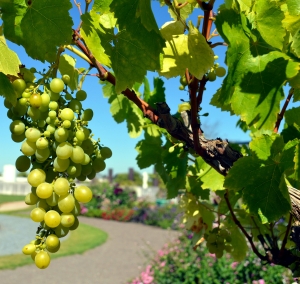National Orange Wine Day: A Dive into the History and Celebration of Amber Wine
Every year on October 6th wine lovers and curious drinkers gather to celebrate National Orange Wine Day, a day to celebrate one of the world’s oldest and most interesting wine styles—orange wine. This day is all about the winemaking technique that produces amber-coloured wines from white grapes.
This style has been around for thousands of years but National Orange Wine Day is a relatively new holiday. It was created to bring attention to a wine style that had been forgotten but is now making waves in the global wine world.

History of National Orange Wine Day
National Orange Wine Day was founded in 2018 by wine expert Amanda Claire Goodwin, aka Samantha Sommelier. She created the day to bring awareness to this under the radar wine style and to get wine lovers to re-discover the ancient and artisanal craft of orange wine. Goodwin’s inspiration for the holiday came from her love of natural and sustainable wines and a desire to educate others about the subtleties and history of skin-contact winemaking.
As a sommelier Goodwin knew that despite the rise of natural wines orange wine was still unknown outside of the wine geek world. By creating a day for orange wine she hoped to get others to learn about its history, flavours and the traditional techniques that have kept this style alive for thousands of years.
Since its inception National Orange Wine Day has grown, more wineries, wine shops, restaurants and consumers are joining in each year. Today it’s a platform to celebrate not only the orange wine itself but the winemakers who continue to make this ancient style.
A Brief History of Orange Wine
Orange wine is not a new invention—it’s an ancient winemaking technique that dates back over 8,000 years. The tradition of skin-contact fermentation, the process that gives orange wine its colour and tannic structure, originated in the Caucasus region, particularly in what is now Georgia.
In Georgia, winemakers still use qvevri, large clay vessels buried underground, to ferment and age their wines. This allows the juice to ferment on the grape skins and seeds for an extended period which gives the wine its amber colour, deep flavours and tannic profile. This was the common practice throughout the ancient world and continued in parts of Eastern Europe for centuries. But with the rise of modern winemaking techniques which emphasized cleaner and quicker fermentation for white wine, the tradition of skin-contact wines disappeared in many regions.
It wasn’t until the late 20th century that orange wine started to re-emerge, in Italy’s Friuli-Venezia Giulia region and Slovenia where winemakers like Josko Gravner and Stanko Radikon brought it back to life. They were driven by a desire to return to more natural and sustainable winemaking practices which included skin-contact fermentation for white grapes. Their work sparked a new interest in orange wine and it started to spread across Europe and beyond.

Why National Orange Wine Day?
National Orange Wine Day is not just about a wine it’s about a winemaking tradition that’s thousands of years old. It’s about the artisanal skill of natural winemakers who are keeping this ancient technique alive while innovating with modern expressions.
Orange wine has a cultural heritage that’s tied to the past and present of winemaking. Its resurgence is a sign of the growing interest in natural, organic and biodynamic wines and the consumer desire for wines that show a deep connection to the soil and the way they were made.
National Orange Wine Day is also an opportunity to promote sustainable winemaking practices. Many orange wine producers are organic or biodynamic and minimal intervention in the cellar so orange wine is a favourite among those who love big flavours and ethical wine.
The Flavour Profile and Appeal of Orange Wine
Orange wine’s bold, complex flavours and texture are unlike any other white or red wine. It’s a textural wine with tannins you only find in red wine and flavours that are savoury, nutty and slightly oxidative. Common tasting notes:
- Stone fruits like apricots, dried oranges and peaches.
- Herbal and floral notes like chamomile, honey or tea.
- Nuttiness from slight oxidation during winemaking.
- Spices like ginger, clove or turmeric.
Because of this orange wine can pair with a wide range of foods especially those with complex or big flavours like:
- Fermented foods like kimchi or pickles.
- Hearty meats and grilled vegetables.
- Spicy dishes like Indian or Middle Eastern cuisine.
- Cheeses, creamy and sharp.

End
National Orange Wine Day is more than just a weird wine day – it’s a celebration of 8,000 years of winemaking history and the people who keep these traditions alive. As more people try orange wine the holiday will continue to grow and new generations of wine lovers will get to appreciate the complexity, boldness and heritage of this style.




Leave a Reply
Want to join the discussion?Feel free to contribute!